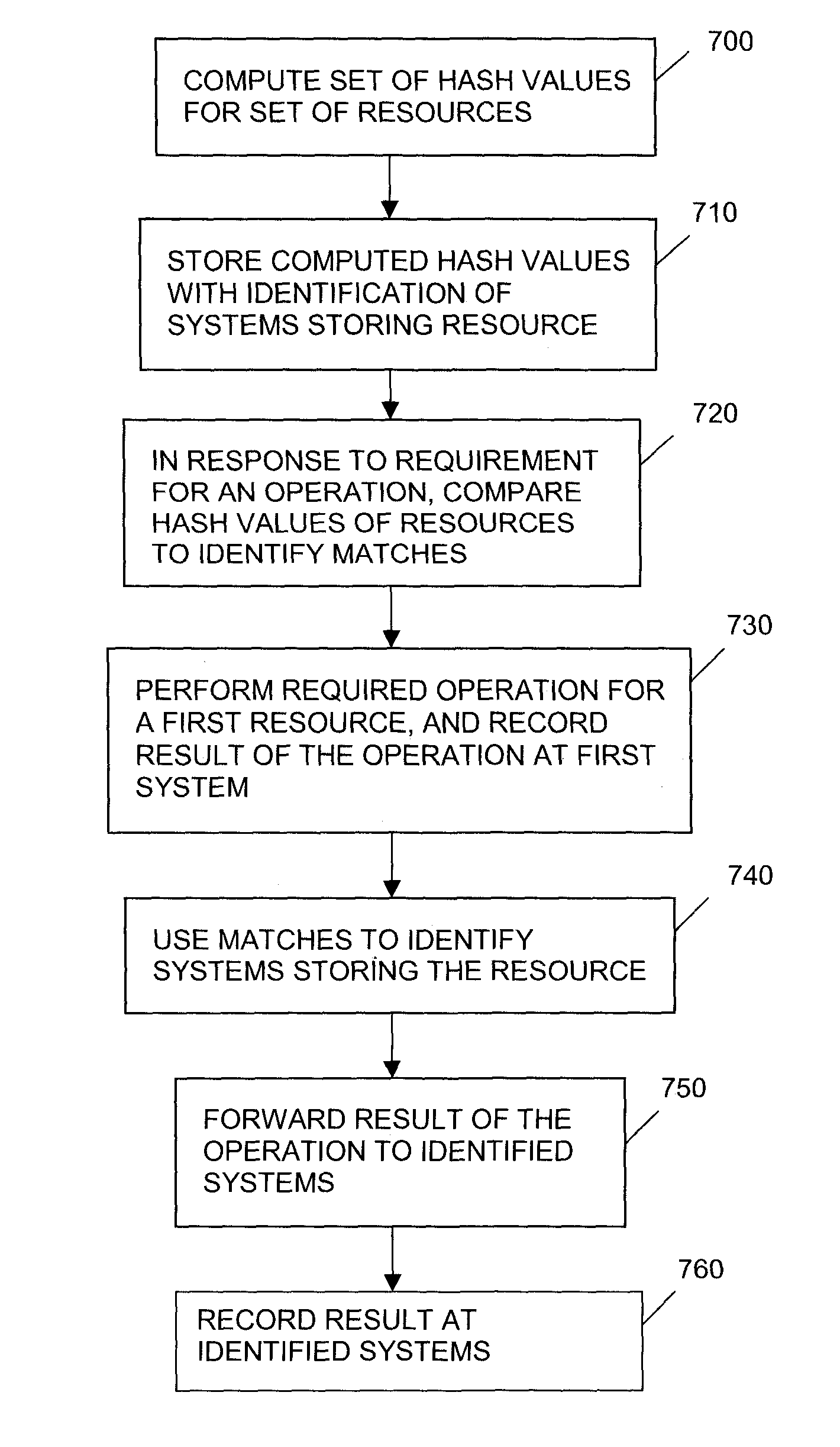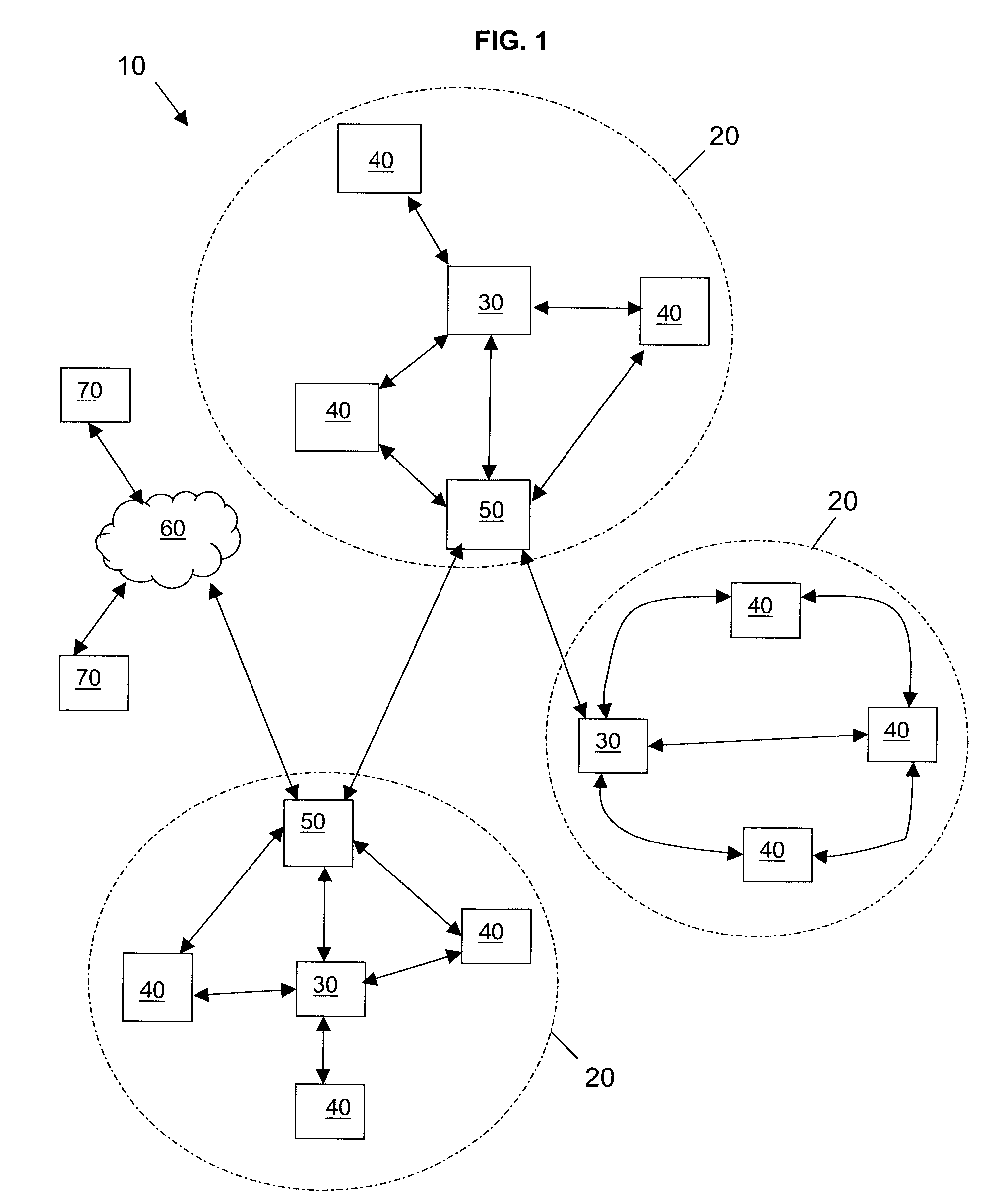Hash-based access to resources in a data processing network
a data processing network and resource technology, applied in the field of data processing network resources, can solve the problems of excessive internet communication traffic, limited communication throughput, and inability to meet the needs of users,
- Summary
- Abstract
- Description
- Claims
- Application Information
AI Technical Summary
Benefits of technology
Problems solved by technology
Method used
Image
Examples
Embodiment Construction
[0038]A first embodiment of the invention is implemented in a data processing network as shown schematically in FIG. 1. The network 10 includes a plurality of interconnected local area networks (LANs) 20 which each include a pool server data processing system 30 and a number of client data processing systems 40 connected to the pool server 30 within their LAN 20. Some LANs may include an additional proxy server or gateway 50 via which they connect to the wider network 60, or connectivity to the wider network may be provided via the pool server 30. Any of the client systems 40 may send requests via the network for access to resources stored at remote server systems 70.
[0039]Embodiments of the invention may be implemented by a set of components distributed across the entire network 10, distributed within an individual LAN 20, or contained within individual data processing systems 30, 40, 70. A number of alternative embodiments of the invention are described below.
[0040]It will be appa...
PUM
 Login to View More
Login to View More Abstract
Description
Claims
Application Information
 Login to View More
Login to View More - R&D
- Intellectual Property
- Life Sciences
- Materials
- Tech Scout
- Unparalleled Data Quality
- Higher Quality Content
- 60% Fewer Hallucinations
Browse by: Latest US Patents, China's latest patents, Technical Efficacy Thesaurus, Application Domain, Technology Topic, Popular Technical Reports.
© 2025 PatSnap. All rights reserved.Legal|Privacy policy|Modern Slavery Act Transparency Statement|Sitemap|About US| Contact US: help@patsnap.com



